‘Extraordinary… transgressive’: Malcolm McLaren’s great lost fashion collection
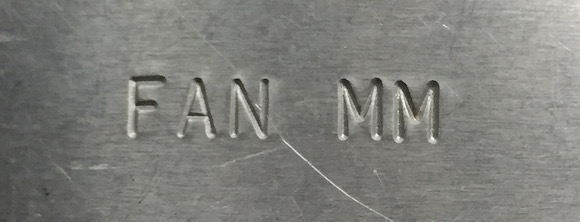
//Detail: Etching in steel toe-cap for the 80s collection. This image © Paul Gorman Archive. No reproduction without permission//
On the collapse of their design partnership in October 1983 after showcasing of the collection Worlds End 1984 in Paris and London, Malcolm McLaren and Vivienne Westwood went their separate ways.
The latter had by then shifted base to Italy, where she launched her solo career working with Carlo d’Amario and the late Elio Fiorucci, initally by repurposing her final collaboration with McLaren into Hypnos (which had been its original title).
Their association was legally dissolved a few months later, in March 1984, in a document which secured individual retention of rights to their joint designs 1971-83 (it is a misconception that McLaren relinquished his equal share of the authorship of those designs; he did not).
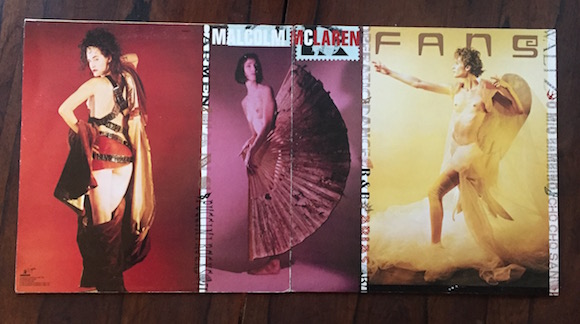
//Back and front of 1984 LP Fans. Photography: Robert Erdman, styling: Amanda Grieve, who commissioned John Galliano to produce the giant fan modelled by Susie Bick in the central panel//
By this time McLaren was working on opera/r&b hybrid LP Fans, which – led by hit single Madam Butterfly – was released to acclaim in the autumn of 1984. Simultaneously he developed a typically ambitious fashion collection of his own, consistent with his abiding obsession with “the look of music and the sound of fashion”.
This was to be known as “Fans” or “FAN MM” and was created over several months at a design studio he set up in London’s King’s Cross, where ideas were worked up with his then-partner Andrea Linz and designer Simon Withers.
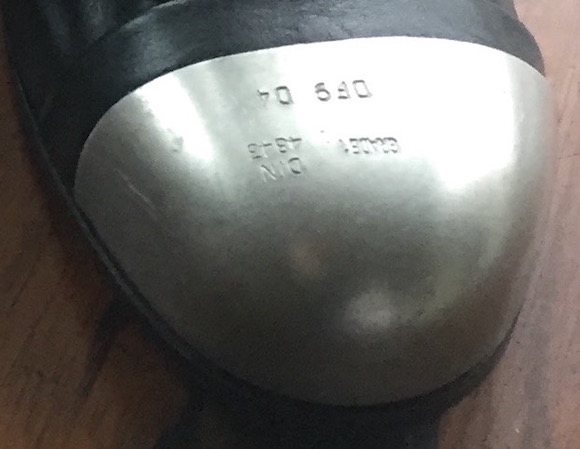
//Detail: Stainless steel toe-cap. This image © Paul Gorman Archive. No reproduction without permission//
Eventually a range of extraordinary and transgressive designs reached sampling stage.
“The concept centred on a beautiful woman attending a ball in clothes which had been ‘militarised’,” says Withers, nowadays a major force in architecture academia.
The designs included hand-crafted lace-up boots in calf with exposed stainless steel toecaps, armature-structured bodiced leather jackets, gowns in pin-stripe material threaded with tiny gold chain, custom name belt buckles and gold conical bras.
“We used everything from hessian as interlining to Bedford cord,” says Withers, who had worked previously with McLaren and Westwood on realising the Witches and WE 1984 collections. “It was such a fertile period and incredibly exciting working with Malcolm – impoverishing but incredibly exciting!”
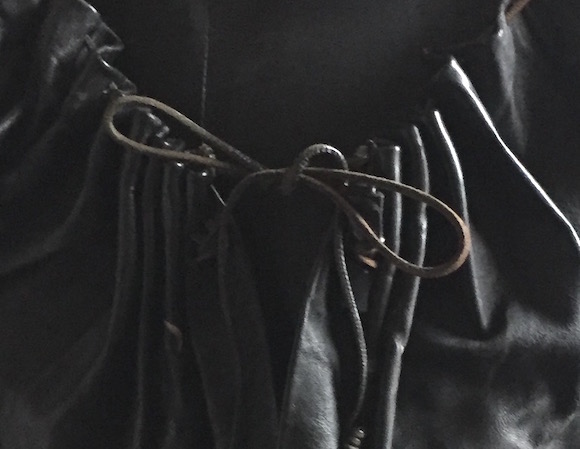
//Detail: A single leather cord closes the front of the jacket. This image © Paul Gorman Archive. No reproduction without permission//
For example, the leather bodice jackets – ornate objects in themselves – bore the imprints of small metal objects such as keys burnt into their surfaces as if by branding.
Fashion entrepreneur Trevor Myles has recalled how he helped McLaren try and obtain financing for the project.
“Malcolm and those guys were coming up with mind-blowing stuff,” Myles told me when I interviewed him for my book The Look. “They’d even located a manufacturer who was producing designs in chainmail!”
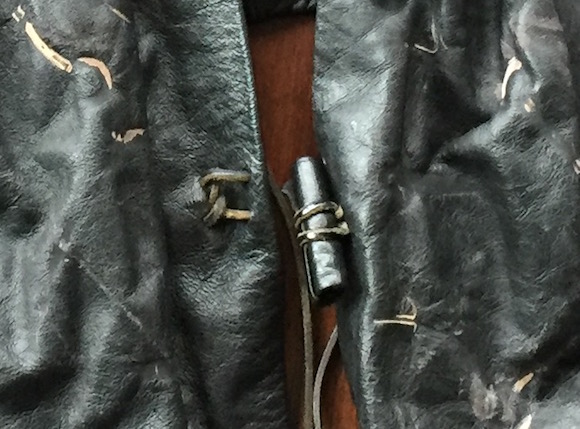
//Details: Rolled leather fastening and branding marks. This image © Paul Gorman Archive. No reproduction without permission//
Withers recalls obtaining the steel toe-caps from specialist Dinkie Heel and finding a loom operator on a Scottish isle who was prepared to risk equipment by feeding disparate material through it. “That’s where we made the stunning gold chain pinstripe,” says Withers. “It was breathtaking. We even got them to weave a crude, porcupine-like corduroy out of rubber.”
At some stage, on a trip to Paris McLaren shared his conical bra idea with Jean-Paul Gaultier, who was already mining the same vein by producing such “underwear as outerwear”. Of course, a Gaultier variant achieved notoriety when worn by Madonna and her dancers on the 1990 Blonde Ambition tour.
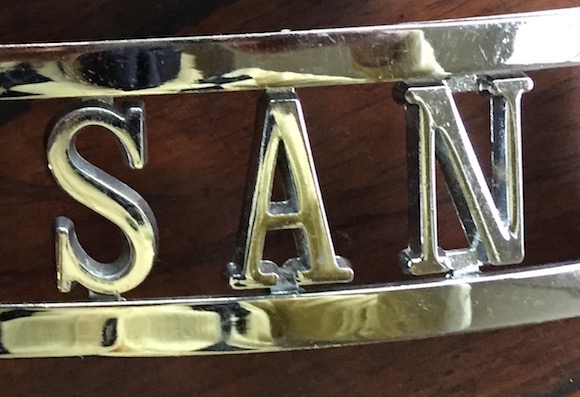
//Detail: From ‘San’ custom name buckle (as in the Puccini opera character Cho Cho San). This image © Paul Gorman Archive. No reproduction without permission//
There are various versions of how this transaction proceeded. McLaren himself said that he gave the design to Gaultier in the spirit of amity. Others believe he sold it to the French designer.
Withers, whose first-hand testimony is difficult to deny, says: “I think Malcolm just got over-enthusiastic and gave his visiting card away, as it were.”
By the summer of 1984 the prospect of serious funding had receded, and the magpie-minded McLaren moved on to promoting Fans – the cover of the LP and the Madam Butterfly single incorporated some of the custom name buckles – shifting base first to New York, where he investigated the possibility of a Broadway musical based on the record, before taking residency in Los Angeles developing film ideas for the likes of Steven Spielberg.
The self-described “ultimate fashion victim” was to return to the arena, with the Japan-only Ancien/Dead In England label in the 90s and a children’s range with Yoox in the 00s. Meantime, the remaining samples of the 1983/4 collection offer evidence of an accomplished and powerful set of fashion ideas which deserve much greater recognition.
